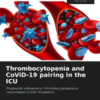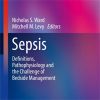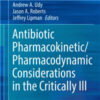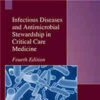Unexpectedly High Frequency of Enterococcal Bloodstream Infections in COVID-19 Patients Admitted to an Italian ICU
journals.lww.comCoronavirus disease 2019 seemed to increase the frequency of bloodstream infections (particularly Enterococcus-related bloodstream infection) after ICU admission.
This may have been due to enteric involvement in patients with severe coronavirus disease 2019 and/or limitations in controlling the patient-to-patient transmission of infectious agents in extremely challenging circumstances.
Patients with coronavirus disease 2019 admitted to the ICU of Luigi Sacco Hospital (Milan, Italy) for greater than or equal to 48 hours between February 21, 2020, and April 30, 2020.
The frequency of bloodstream infections per 1,000 days of ICU stay was calculated in 89 coronavirus disease 2019 patients, and the cumulative probability of bloodstream infection was estimated using death and ICU discharge as competing events. Sixty patients (67.4%) experienced at least one of the 93 recorded episodes of bloodstream infection, a frequency of 87 per 1,000 days of ICU stay (95% CI, 67–112).
The patients who experienced a bloodstream infection had a higher Sequential Organ Failure Assessment score upon ICU admission (9.5; interquartile range, 8–12 vs 8, interquartile range, 5–10; p = 0.042), a longer median ICU stay (15 d; interquartile range, 11–23 vs 8, interquartile range, 5–12; p < 0.001), and more frequently required invasive mechanical ventilation (98.3% vs 82.8%; p = 0.013) than those who did not. The median time from ICU admission to the first bloodstream infection episode was 10 days. Gram-positive bacteria accounted for 74 episodes (79.6%), with Enterococcus species being the most prevalent (53 episodes, 55.8%). 32 isolates (27.3%) showed multidrug resistance.

















